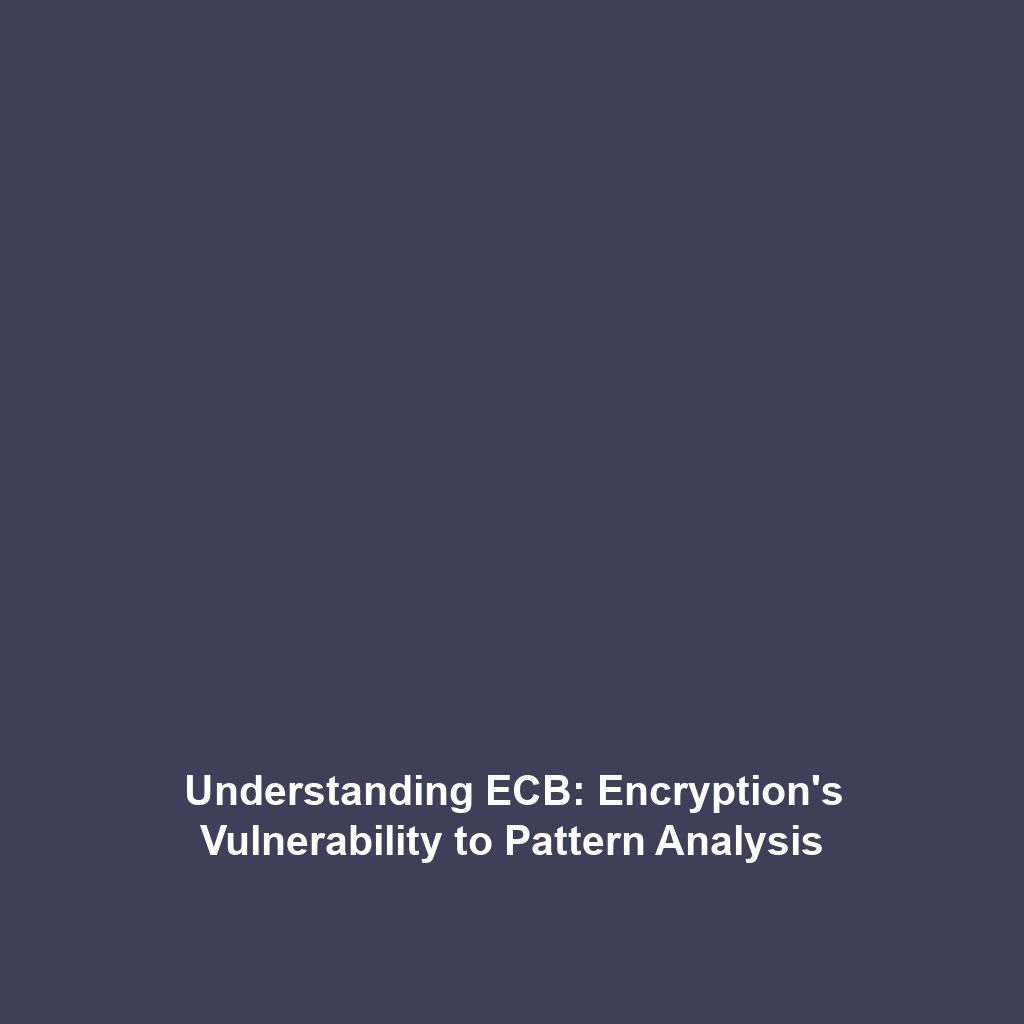Modern Techniques in Cryptanalysis
Introduction
Modern Techniques in Cryptanalysis play a crucial role in the ongoing battle between cryptography and adversarial attacks. Understanding these techniques is essential for enhancing security measures relevant to various data protection mechanisms. As encryption methods evolve, so too do the strategies employed by attackers to decipher encrypted information. This article delves into the significance of modern cryptanalysis techniques within the realm of cryptography, outlining major concepts, applications, and challenges faced in this dynamic field.
Key Concepts
1. Classic vs. Modern Cryptanalysis
Modern cryptanalysis encompasses a variety of techniques that aim to break cryptographic algorithms, enhancing overall security. Key concepts include:
- Statistical Analysis: Utilizes statistical methods to identify weaknesses in cryptographic systems.
- Linear Cryptanalysis: Involves finding linear approximations to describe relationships between plaintext, ciphertext, and key.
- Differential Cryptanalysis: Studies how differences in input can affect the resultant difference in output.
2. The Role of Technology in Cryptanalysis
Advancements in technologies, including artificial intelligence and quantum computing, have transformed the landscape of cryptanalysis, allowing researchers to leverage vast computational resources for more efficient attacks.
Applications and Real-World Uses
Modern Techniques in Cryptanalysis have vast applications in numerous fields. Key examples include:
- Data Security: Strengthening encryption protocols used in financial transactions and personal data storage.
- Network Security: Assessing vulnerabilities in communications infrastructure, making it crucial for companies to protect sensitive information.
- Blockchain Technology: Enhancing the integrity and security of cryptocurrency transactions through robust cryptanalytic methods.
Current Challenges
Despite remarkable progress, several challenges persist in the study and application of Modern Techniques in Cryptanalysis:
- Complexity of Algorithms: Modern encryption algorithms are increasingly complex, making them harder to analyze.
- Adaptive Attacks: Attackers are continuously developing new techniques that adapt to existing security measures.
- Resource Intensiveness: High computational costs make it prohibitive to execute certain cryptanalytic techniques effectively.
Future Research and Innovations
The future of Modern Techniques in Cryptanalysis looks promising, with ongoing research focusing on the following innovations:
- Quantum Cryptanalysis: Investigating how quantum computing can disrupt current cryptographic practices.
- Machine Learning Applications: Using AI-driven algorithms to identify vulnerabilities in cryptographic systems.
- Post-quantum Cryptography: Developing new cryptographic systems that remain secure in a post-quantum environment.
Conclusion
In summary, Modern Techniques in Cryptanalysis are paramount in the field of cryptography, influencing security protocols across various sectors. As attackers become more sophisticated, continuous innovation in cryptanalysis will be vital to maintain data security. For those interested in deepening their knowledge about cryptography, consider exploring related topics such as quantum cryptography or the history of cryptographic methods. Stay informed about the ongoing advancements to better protect your data in the digital age.








